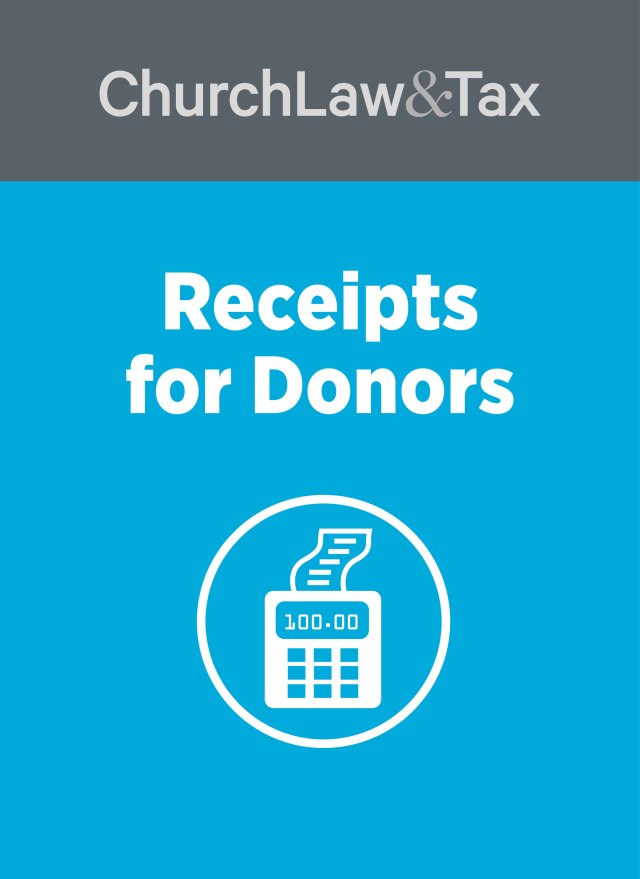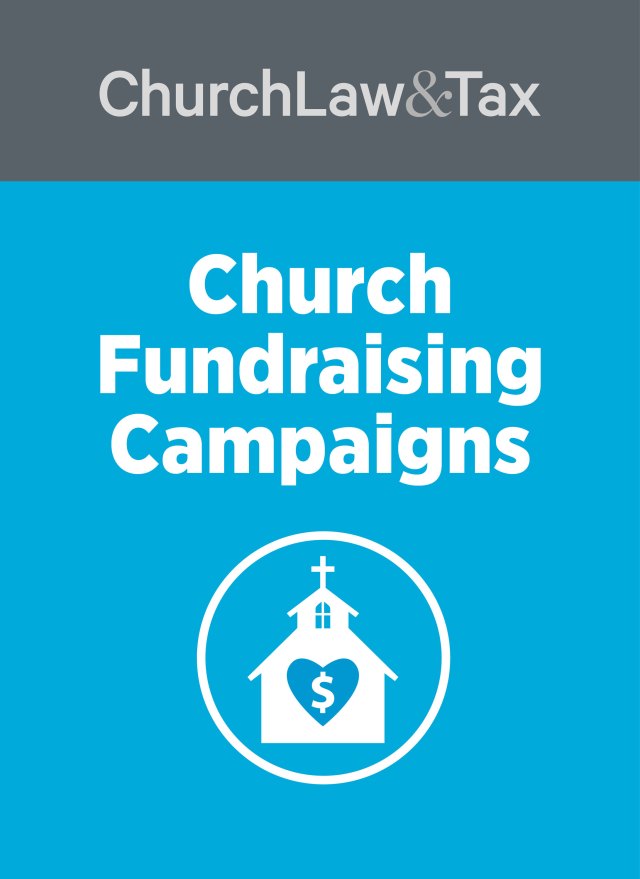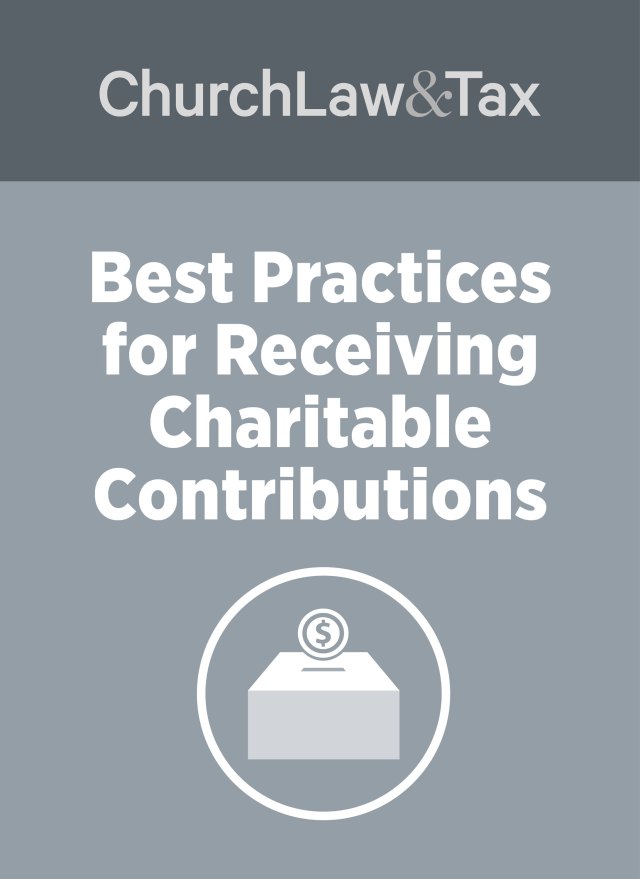Kendrix v. Commissioner, T.C. Memo. 2006-9
Background. Donors must comply with specific substantiation requirements in order to claim a charitable contribution deduction on their tax return. Special rules apply to any contribution of cash or property valued by the donor at $250 or more. Failure to comply with these requirements may result in a loss of a tax deduction. It is important for church treasurers to be familiar with these requirements, since they generally are responsible for the issuance of contribution statements and receipts. A recent Tax Court case illustrates the importance of compliance with these rules.
A woman (Hannah) claimed a charitable contribution deduction of $22,000 on her tax return for cash and property donated to her church. The cash contributions amounted to $12,000, and consisted of 12 monthly contributions ranging from $250 to $450 and several other contributions ranging from $125 for the “annual choir concert” to $1,200 for the building fund.
Hannah also made several donations of miscellaneous noncash property, including furniture, kitchen equipment, a television, and several items of clothing. She valued each of these items at more than $250 but less than $5,000.
The IRS audited Hannah’s tax return and asked her to substantiate her charitable contributions of cash and property. She submitted a receipt from her church that listed each contribution of cash and property. The IRS concluded that the receipt failed to substantiate any contribution of $250 or more because it failed to state whether the church had provided any goods or services in exchange for the contributions, as required by the tax code. Further, the receipt failed to adequately describe the items of donated property. Hannah appealed to the Tax Court.
The court’s ruling. The Tax Court agreed with the IRS that Hannah’s contributions of $250 or more were not deductible. It began its opinion by summarizing the following general rules that apply to contributions of cash and property that are valued by the donor at less than $250:
contributions valued at less than $250
• Cash contributions. The income tax regulations require cash contributions to be substantiated with either a canceled check, a receipt from the charity showing its name and the date and amount of the contribution, or “other reliable written records” showing the charity’s name and the date and amount of the contribution.
• Noncash contributions. The income tax regulations require noncash contributions to be substantiated with a receipt from the charity showing its name, the date and location of each contribution, and a “description of the property in detail reasonably sufficient under the circumstances.” Where it is “impractical” to obtain a receipt, donors must maintain “reliable written records” of their noncash contributions.
contributions valued at $250 or more
The court noted that section 170(f)(8) of the tax code imposes special substantiation requirements for individual contributions of $250 or more. Section 170(f)(8) provides:
(A) No deduction shall be allowed for any contribution of $250 or more unless the taxpayer substantiates the contribution by a contemporaneous written acknowledgment of the contribution by the [charity] that meets the requirements of subparagraph (B).
(B) An acknowledgement meets the requirements of this subparagraph if it includes the following information.
(i) The amount of cash and a description (but not value) of any property other than cash contributed.
(ii) Whether the [charity] provided any goods or services in consideration, in whole or in part, for any property described in clause (i).
(iii) A description and good faith estimate of the value of any goods or services referred to in clause (ii) or, if such goods or services consist solely of intangible religious benefits, a statement to that effect. For purposes of this subparagraph, the term “intangible religious benefit” means any intangible religious benefit which is provided by an organization organized exclusively for religious purposes and which generally is not sold in a commercial transaction [e.g., worship services, teaching, and sacraments].
(C) An acknowledgment shall be considered to be contemporaneous if the taxpayer obtains the acknowledgment on or before the earlier of (i) the date on which the taxpayer files a return for the taxable year in which the contribution was made, or (ii) the due date (including extensions) for filing such return.
Key point. Note that in the case of donations of noncash property the charity is not required to include a value of the property in the written acknowledgment (receipt) that it issues the donor. All that is required is an adequate “description” of the donated property. Churches are not appraisers, and should not attempt to “value” donated property, no matter how much pressure is applied by a donor. The only value that a receipt should provide is a “good faith estimate of the value of any goods or services” provided by the charity to the donor in exchange for the donation.
Key point. The income tax regulations clarify that separate contributions of less than $250 are not subject to these additional requirements “regardless of whether the sum of the contributions made by the taxpayer to a charity during a taxable year equals $250 or more.”
Hannah’s contributions
The court concluded that the receipt the church provided to Hannah failed to substantiate any of her cash contributions of $250 or more:
[The church’s receipt] failed to state whether the church provided any goods or services in consideration, in whole or in part, for those contributions listed therein. Therefore, all of the listed contributions of $250 or more are nondeductible pursuant to [tax code section 170(f)(8)]. Only contributions of less than $250 are not subject to section 170(f)(8) and are, therefore, deductible.
Similarly, the court agreed with the IRS that the church’s receipt failed to substantiate any of Hannah’s contributions of noncash property valued at $250 or more:
The receipt fails to state whether [the church] provided any goods or services in consideration, in whole or in part, for the items listed therein. Because Hannah claims that the total value of the items listed on the receipt is at least (indeed exceeds) $250, those contributions are nondeductible pursuant to section 170(f)(8).
Hannah claimed an additional charitable contribution deduction of $4,750 on her tax return for several items of noncash property that she donated to another charity, including clothing, furniture, house wares, bicycles, and electronics equipment. Many of these items were valued at $250 or more, and some were valued at more than $500. None was valued at more than $5,000.
The charity provided her with a receipt stating that “no goods or services were rendered to you as a result of this donation.” However, the court concluded that this receipt failed to satisfy the substantiation requirements of section 170(f)(8) because it did not contain “a description of the [donated] property in detail reasonably sufficient under the circumstances.” Although the receipt contained a list of items (e.g., furniture, beds, TV, VCR, dinner set, stove) and a total “estimated value” of $4,750, the receipt “contained almost no information regarding the quality, age, or condition of the donated items that would enable us to ascertain their value at the time of the donation. Therefore, there is no evidence that the $4,750 estimated value is accurate or that it was furnished by the charity rather than by Hannah.”
The court also pointed out that contributions of noncash property valued at more than $500 (but not over $5,000) are subject to additional substantiation requirements. A donor must have records showing (1) how the donated property was acquired (for example, by purchase, gift, or inheritance); (2) the approximate date the property was acquired by the donor; and (3) the cost or other basis of property held less than 12 months and, if available, the cost or other basis of property held 12 months or more. This requirement, however, does not apply to publicly traded securities. This additional information is reported to the IRS on Form 8283 (Section A). The court concluded that Hannah failed to comply with these requirements for any of the items of donated property valued at more than $500:
[Her records] fail to comply with the requirement … regarding the content of a taxpayer’s written records, that such records state “the method utilized in determining the fair market value” of the donated property …. She has furnished no evidence (such as canceled checks or bank withdrawals contemporaneous with the property acquisition dates) that would support her cost figures. Moreover, because her worksheets were attached to an amended Form 8283 that was furnished to the IRS in connection with the audit, we infer that they were not prepared contemporaneously with the contributions, a fact which casts doubt upon the reliability of those worksheets. Under these circumstances, we find that her worksheets are inadequate to substantiate her claimed deduction for noncash contributions.
Key point. The tax code imposes additional substantiation requirements on contributions of noncash property valued by the donor at more than $5,000. These additional requirements were not addressed by the court because none of Hannah’s contributions reached this threshold. These additional requirements are explained fully in chapter 8 of Richard Hammar’s 2006 Church & Clergy Tax Guide.
Penalties
Section 6662(a) of the tax code imposes a penalty equal to 20 percent of the underpayment in tax “attributable to, among other things, negligence or disregard of rules or regulations.” The penalty for negligence does not apply to an underpayment of tax to the extent the taxpayer can show both reasonable cause and good faith. Negligence “includes any failure by the taxpayer … to substantiate items properly.”
The IRS assessed a negligence penalty against Hannah, and the court upheld the penalty:
All of the charitable contributions deductions that we have disallowed are attributable to a lack of adequate substantiation, including the deductions disallowed because the acknowledgments obtained by Hannah from charities that were in violation of section 170(f)(8). Her failure to obtain acknowledgments stating that the charity did not provide goods or services in consideration, in whole or in part, for all but one of her cash and noncash contributions in excess of $250 constituted a failure to comply with what is specifically described by the Internal Revenue Code as a “substantiation requirement”. Hannah, a long-time self-professed frequent contributor to charitable organizations, should have been aware that the acknowledgments failed to satisfy the special substantiation requirement of section 170(f)(8) and she should have asked the charities to satisfy that requirement before deducting her contribution to those organizations in excess of $250. Not only is the requirement to obtain a proper acknowledgment set forth in the tax code and in the regulations, it is also contained in both the instructions for preparing Schedule A and IRS Publication 526 (Charitable Contributions) …. Because Hannah has failed to meet her burden of proving that she acted with reasonable cause and good faith, we [agree] that she is liable for the accuracy-related penalty on her underpayments for the audit years associated with the charitable contribution deductions disallowed herein.
Application to church treasurers. This case has direct relevance to every church treasurer. It illustrates the importance of being familiar with the substantiation requirements that apply to charitable contributions. A failure to provide donors with receipts that comply with these requirements may lead to a loss of a tax deduction. Here are a few examples that illustrate this point.
Example. Bob donated $50 each week to his church in 2005. In addition, he made a $1,000 donation to the building fund, and a $1,000 donation to the missions fund. At the end of the year the church treasurer provided Bob with a receipt that itemized each of his contributions, but failed to state whether or not the church provided him with any goods or services in exchange for any of his contributions. Cash contributions of $250 or more must be substantiated by a written acknowledgment (receipt) from the charity that states whether or not any goods or services were provided to the donor in return for the contributions. Here is an example of the required statement: “No goods or services were provided in exchange for your contributions, other than intangible religious benefits.” The defective receipt issued by the church is not sufficient to substantiate Bob’s contributions of $1,000 to the building fund and missions fund.
Example. Same facts as the previous example. Assume that the IRS audits Bob’s tax return in 2007, and denies a deduction for the two $1,000 contributions. Is it too late for the church to issue a revised receipt for 2005 that includes the required language? Unfortunately, the answer is yes. The tax code requires written acknowledgments to be “contemporaneous.” The IRS explains this requirement as follows: “For the written acknowledgment to be considered contemporaneous with the contribution, a donor must receive the acknowledgment by the earlier of the date on which the donor actually files his or her individual federal income tax return for the year of the contribution, or the due date (including extensions) of the return.”
Example. Barb donated an item of jewelry to her church in 2005, and claimed a charitable contribution deduction on her tax return of $1,000. The church issued Barb an annual “contribution summary” for 2005 that listed all of her donations of cash and property for the year. The contribution summary contained the following statement: “No goods or services were provided in exchange for your contributions, other than intangible religious benefits.” It described the donated jewelry as “an item of jewelry.” This receipt may not be sufficient since it, like the receipt issued to Hannah, “contained almost no information regarding the quality, age, or condition of the donated items that would enable us to ascertain their value at the time of the donation.” Also, note that donors who contribute items of noncash property valued at more than $500 (but not more than $5,000) must complete Section A of Form 8283 and attach it to the tax return claiming the deduction. For contributions of noncash property valued at more than $5,000, additional substantiation requirements apply.
Tip. Be alert to any donation of property that may be valued by the donor at more than $500. Be sure the donor is aware of the need to complete Section A of Form 8283 for donations of property valued at more than $500 but not more than $5,000, and Section B of Form 8283 for donations of property (other than publicly traded stock) valued at more than $5,000. The instructions to Form 8283 contain a helpful summary of the substantiation requirements that apply to these kinds of gifts. Different rules apply to donations of vehicles. Failure to comply with these rules may lead to a loss of any deduction. It is a good practice to have some of these forms on hand to give to donors who make contributions of noncash property.
This article first appeared in Church Treasurer Alert, April 2006.




